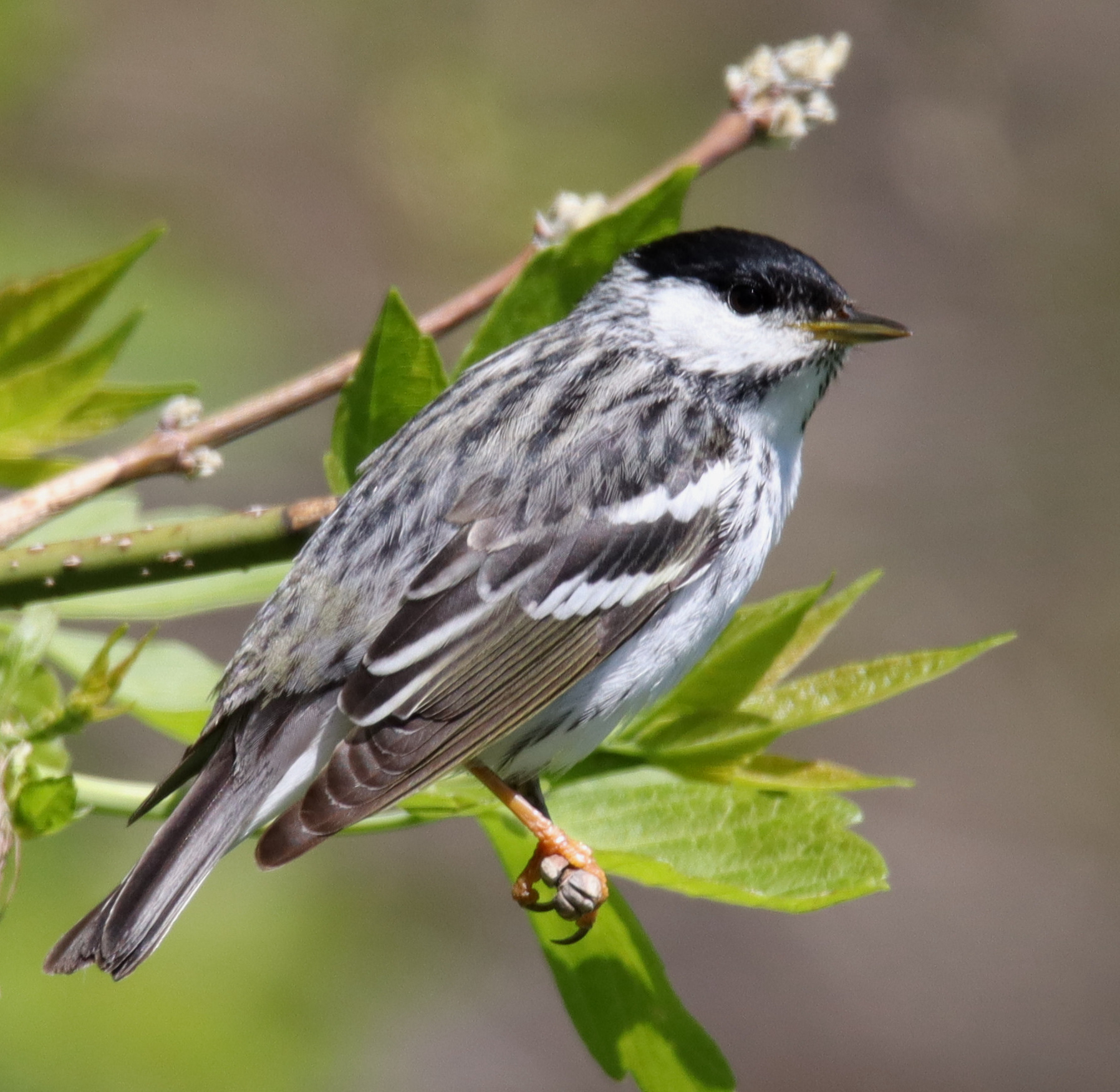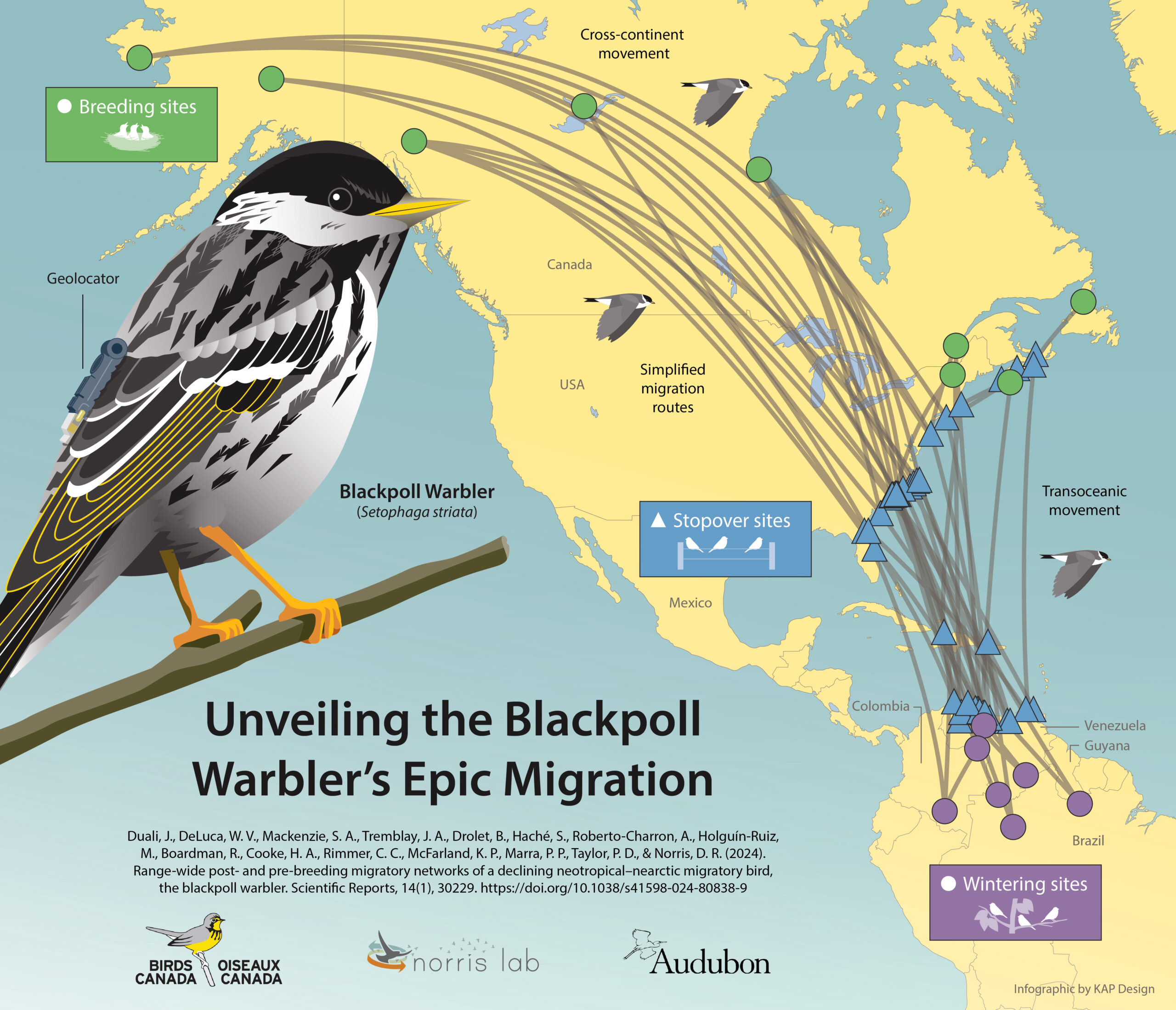
After reading this article, you may never look at a Blackpoll Warbler the same way again (photo by Paul Konrad).

An insightful map that shows the “crisscross migration pattern” of individual Blackpoll Warblers that nest from Alaska to Newfoundland and winter in northern Venezuela and Colombia (graphic by KAP Design).
|
During the past decade, a dedicated group of researchers has been studying the migration complexities of Blackpoll Warblers, small but extraordinary songbirds renowned for their incredible migrations from their nesting range that spans the boreal forest of North America to tropical forests in South America – and back – flying thousands of miles each year. Using advanced tracking technologies, primarily tiny light-sensitive geolocators, and birders’ eBird data reveal a “crosswise migration pattern” among Blackpoll Warblers.
Initially the study confirmed that Blackpolls fly across the Atlantic Ocean from the eastern seaboard of the United States to northern South America as part of their long migration route. But later, the researchers revealed the “crosswise migration pattern” used by different populations of Blackpoll Warblers. Unlike most other migratory birds, Blackpolls from western breeding populations winter in northeast South America, while individuals from eastern nesting populations winter to northwest South America. An extreme example is that Blackpoll Warblers that weigh less than ½ ounce migrate from the farthest west portion of their nesting range in Alaska as far as 7,500 miles to their wintering area.
The crisscrossing migration pattern highlights the species’ complex migration networks, which span 2 continents and connect diverse ecosystems. This research has also identified key stopover sites that are essential for the survival of Blackpoll Warblers: The eastern seaboard of the United States, northern Venezuela, and Colombia. These stopover sites enable Blackpolls to feed and build energy reserves, or rest and recover from a non-stop flight over the Atlantic Ocean, in some cases exceeding 2,500 miles – a feat that places them among the champions of avian endurance.
Despite their remarkable abilities, Blackpoll Warblers are experiencing population declines from threats to habitats at key stopover and wintering sites, particularly in South America. The researchers’ long-term work underscores the urgency of conserving habitats along the Blackpoll Warbler’s migratory routes, including safeguarding stopover sites, restoring degraded habitats, and addressing continuing threats such as deforestation. Success will require international collaboration between governments, conservation organizations, and local communities, such as the work being conducted by the Conserva Aves Initiative and the Long Point Bird Observatory’s Latin American Training Program.
For the past decade this work has been conducted by Stu Mackenzie from Birds Canada, Dr. Ryan Norris from the University of Guelph, Dr. Bill DeLuca from the National Audubon Society, and Long Point Bird Observatory Cooperator Jelany Duali. Recently, in early December 2024, the group published the results of their work in the journal Nature – Scientific Reports.
The Blackpoll Warbler’s long-distance migrations are a testament to a species’ resilience and complexity. With concerted efforts, we can ensure this species continues to thrive and inspire future generations across the Western Hemisphere. You can refer to the original Birds Canada article at Unveiling the Blackpoll Warbler’s Epic Migration - Birds Canada | Oiseaux Canada